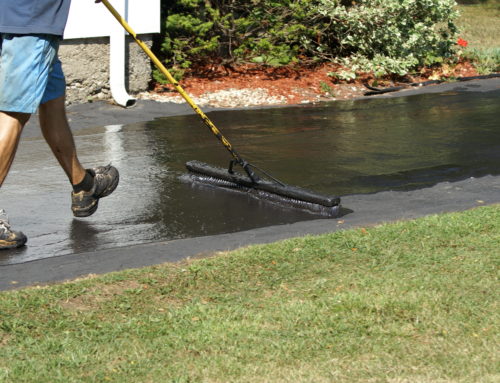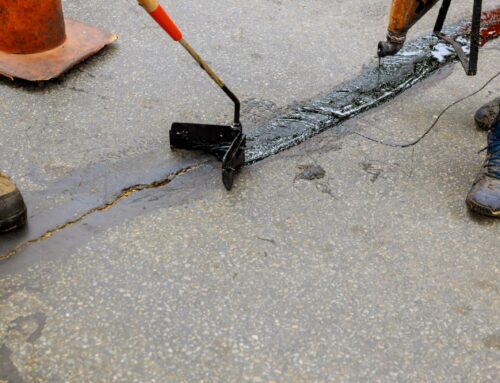And just like that fall has breezed past us and we are on a quick slip into winter and that cold is snapping in quick! If your home or business has asphalt for the driveway or parking lot, you might have some concerns about how the cold will interact with it. We have talked about it before, asphalt in cold weather can be unwelcome news for the structural integrity of the surfaces.
To summarize briefly before diving in on how to handle them, the winter months are adversarial to asphalt. This is predominantly because of the increase in moisture present. While some areas don’t receive snow, the potential for any sort of moisture is a bad one and the low temperatures will cause freezing conditions. This make for more volatile contractions and expansions than asphalt normally endures.
So how to prepare it to make sure you have secure asphalt in cold weather? Here are a few steps to ensure that your asphalt holds up through the coming cold.
Clean Debris
Keeping parking lots and driveways clear of debris delivers tons of help to asphalt longevity. For one if by some miracle snow falls (or you are somewhere where that falling white stuff is a certainty), you want to be able to easily, safely, and properly remove the snow. That means getting rid of a coating of moisture just waiting to work its way into the asphalt and find a place to chill, literally. Keeping debris cleaned up, either with your own elbow grease or by hiring professionals will alert you to any already existing issues such as cracks or potholes. If you repair these immediately before the cold comes, your asphalt won’t have any glaring targets for moisture to work its way in.
Fill and Sealcoat Cracks!
If in the process of cleaning up the debris, you have uncovered a crack. See if you have the time to crack fill it. To properly cure, the night temperature needs to be at least 50 degrees. If you have a few more weeks of that then quickly get to it and prevent further damage from occurring.
Watch for Water
Standing or pooling water is just asking for trouble when the temperatures dip. As mentioned any moisture in the asphalt itself is going to be freezing and expanding and in doing so begins to crumble your asphalt. To let any large amount of water sit is asking for further trouble. If a pool of water is sitting on your asphalt, get to it and remove it before it freezes over and gives you a much worse headache come spring.
Following up on that water watch, you can take preventative measure to try and keep ice from forming. Choosing a de-icer that is meant for the specific surface you are planning on protecting. While most de-icers won’t deteriorate your asphalt, they are not necessarily all environmentally conscious.
A lot of these tips are honestly best practices year-round. Stay on top of the upkeep and your asphalt in cold weather, summer, spring, or fall will keep your drives smooth, sturdy and stable.





